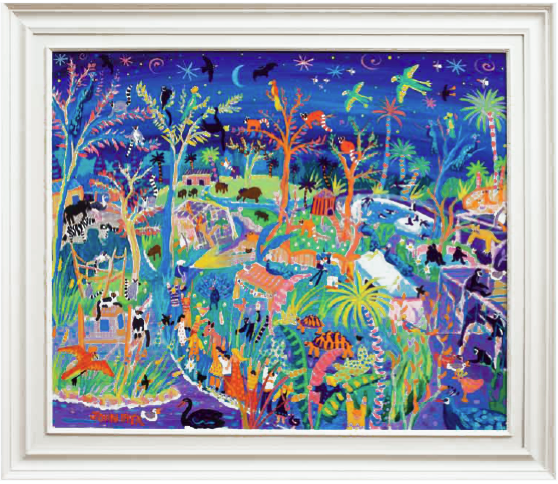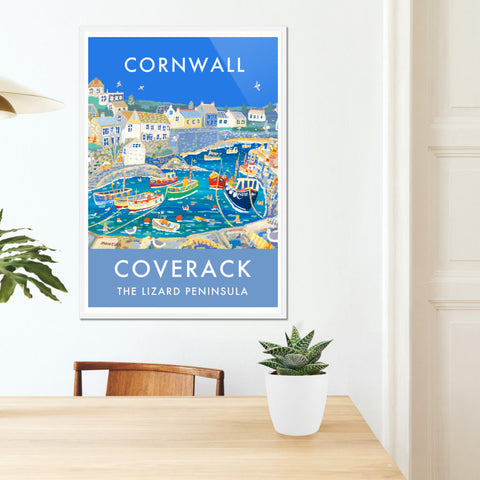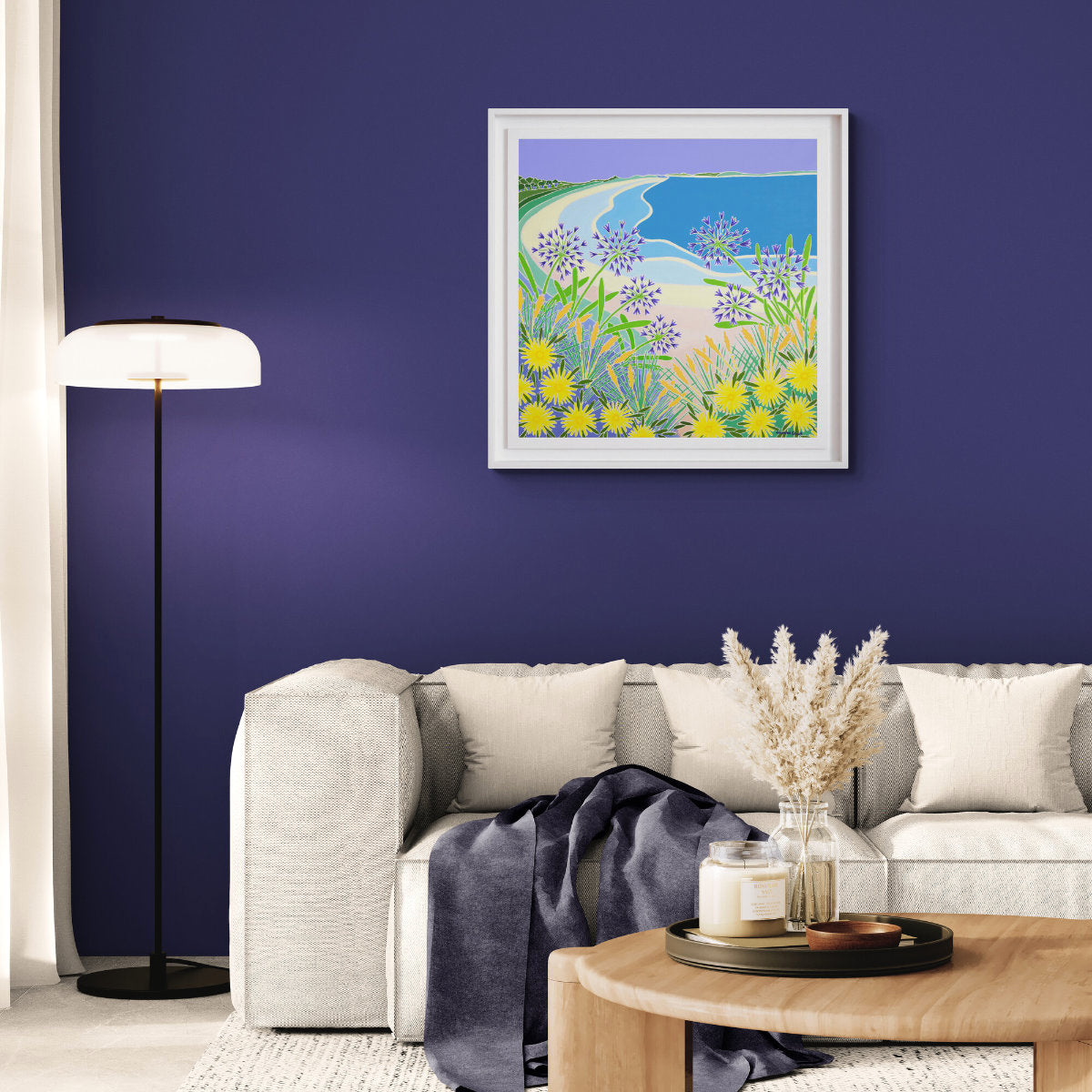
If you decide to purchase unframed prints from us to have framed locally to you and wish to match the style we previously sold then please give your framer the information below.
Print Frame Specification.
• Wood moulding is Rose & Hollis A238 Pine
• Hand painted with colour Dulux Golden Fern 6 matt emulsion paint. This is a pale cream colour.
• The mountboard is Arqadia #405
• We frame with at least a 3 inch mount card border around the print. This varies depending on the size of the print.

The moulding that both artists have chosen is a variation on the 'Salvator Rosa' frame popular in Italy during the 18th century, but with an almond white coloured finish.
For centuries, white architectural frames have been used in religious architecture; however, the white frame has come to be associated with the avant-garde. Its first recorded use was at the third Impressionist group exhibit of 1877, when Degas and Pissarro both utilised white frames. These were considered neutral, as gold had been considered to be, but lacking the opulence and light-trapping qualities of gold.
The Impressionists employed a diverse range of gilded and painted frames, but because much of their work was restaged as it rose in value, there is no permanent record of their framing preferences.
During the 1950s the simple white frame become popular in Cornwall with many of the St Ives artists because of its neutrality, and associations with the contemporary.
John Dyer and Joanne Short carefully select an off-white for their frames so that the lightest tone is the white used in the actual painting. The frames are finished in Dulux matt emulsion almond white (Code 0603Y 47R).
Most paintings from 18x24 inches and above are framed as shown. Smaller works are framed with just the outer section of the illustrated moulding.

The off white inner frame gives the artwork space and draws the eye into the painting, highlighting the light and freshness of Joanne's paintings.
The outer wooden frame provides a soft natural finish to the frame.
Most Joanne Short paintings up until 2020 were framed as shown. After 2020 Joanne's work is framed in the style used for John Dyer's paintings. See above.

For details on our range of framed art poster prints please see our blog that has the full details on the framing we use.
Discover a new collection of French Riviera paintings and Provence paintings by successful Cornish artist John Dyer. These original paintings of Francecelebrate the luminous light, colour, everyday life and easy rhythm of the Côte d’Azur and the Camargue. For collectors seeking a museum-quality painting of France, each canvas willadd character and can bring travel, memory and joy into your home, and offers the long-term appeal of investing in one of Cornwall’s best-loved artists.
n summary, the John Dyer Gallery provides a vibrant collection of contemporary art capturing Cornwall’s essence. From original paintings to limited edition prints and framed art, the gallery supports local artists while offering accessible online shopping and free global delivery. Explore the gallery today to find the perfect piece that enriches your home and supports Cornwall’s thriving art community.
Looking to buy paintings online? This guide will help you find original and affordable artwork, navigate the buying process, and introduce you to talented artists.
Exclusive access to exhibitions, new art, and collector news.
N.B. Please confirm your sign-up – check your email (or junk) and add sales@johndyergallery.com
